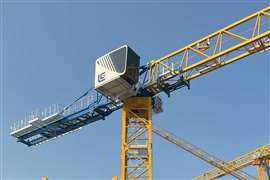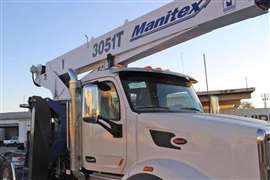50 years of International Construction part 8 - the 2000s
14 November 2012

The period from around 2002 to 2008 will be remembered as one of the most remarkable booms the global construction industry has ever seen. It was a rare period in history when there was strong economic growth in almost every major market in the world. Europe and the US emerged from the recession that was triggered by the 9/11 terrorist attacks on New York and Washington DC, in the US, at the same time as numerous key emerging markets initiated huge investment plans.
In the Middle East for example, Dubai, UAE embarked on a series of construction schemes including the Palm Jumeirah, the world’s largest artificial island and the Burj Khalifa, the world’s tallest building. A metro system was also construction and many more schemes got underway, including several even grander reclamation schemes. But many were to falter in the aftermath of the Lehman Bros. collapse in September 2008.
But for all its eye-catching projects, the volume of work carried out in the emirate of Dubai was dwarfed by the scale of construction that took place in China over the course of the decade. Having negotiated its entry into the World Trade Organization (WTO) in 2001, China truly stepped onto the world stage during the decade, culminating with the 2008 Beijing Olympic Games and 2010 World Fair in Shanghai.
These projects in themselves involved significant construction schemes, but besides these, the country as a whole, and particularly the Eastern seaboard saw remarkable development. As well as growth of its cities, China built more than 50,000 km of expressways during the decade and as the global recession hit in 2008 it embarked on yet more ambitious plans for a national high-speed rail network.
The last decade in India was also marked by major road building schemes, starting with the famous Golden Quadrilateral (GQ) project to join Chennai, Delhi, Mumbai and Bangalore with a diamond-shaped web of motorways, which were then followed by North-South and East-West links and still further stages of The National Highways Development Project (NHDP).
And elsewhere in the world, infrastructure was a focal point for the industry. In South America, 2000 saw the launch of the Initiative for the Integration of the Regional Infrastructure of South America (IIRSA) projects, which were designed to link the highways, water ways and energy grids of the continent’s individual countries. A similar vision in many ways to the Trans European Transport Network (TEN-T) scheme launched in Europe in 1996.
Equipment changes
As far as the equipment industry was concerned, the 2000s saw three major changes. The first was the development of surveying technology into machine control systems, which were able to deliver a step change in the accuracy and efficiency of earthmoving tasks, while reducing the labour requirement.
The second was the emergence of China’s leading manufacturers onto the world stage. According to iC’s Yellow Table ranking of the industry’s leading players, at the start of the decade, China accounted for less than 1% of industry revenues. But by 2010 they had a 15% share – third in the world after the US and Japan.
The final key change for the industry over the decade was the emergence of ever-more stringent laws on emissions from diesel engines. By the time the current round of laws concludes in 2014, the level of pollutants in engine exhaust gasses will be comparable to the levels found in many cities. In some cases, machines will act as air cleaners!




